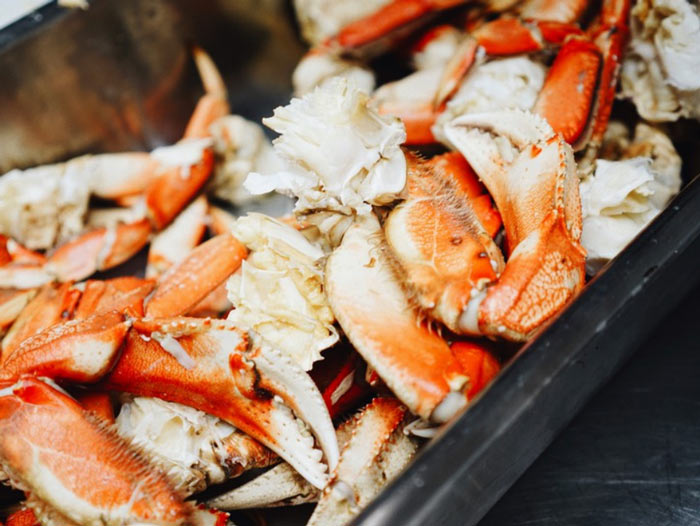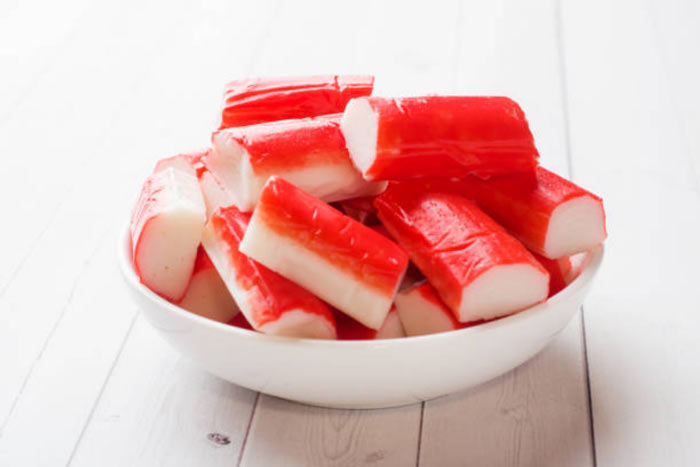Are you curious about what imitation crab is? Many people unfamiliar with seafood have heard of this mysterious product but may need to learn exactly what it is. Imitation crab – sometimes called “crab sticks” or “surimi” – has been around for centuries and can be found in various forms today.
We'll explore the history of imitation crab and its various uses, benefits, and drawbacks. We will also provide some tips on incorporating them into your meals. Read on to learn more about this unique food item.
Imitation Crab – A Popular Seafood Alternative

Imitation crab is a type of seafood product made from surimi. Surimi is a paste made from white-fleshed fish such as pollock, whiting, or hake that has been pulverized and mixed with other ingredients to form a dough-like substance. This dough is then shaped into small chunks which resemble the shape and texture of real crab meat. It can be steamed, boiled, or fried and served in various dishes.
Although imitation crab may look like real crabmeat, it doesn’t contain any crab – hence the name “imitation.” Instead, it contains a mixture of minced fish and various flavorings, starches, and binding agents such as egg whites and vegetable oil.
Different Ways to Prepare Imitation Crab

Imitation crab is incredibly versatile and can be enjoyed in various ways. It can be served as part of a seafood salad to make sushi rolls or stuffed into sandwiches. It also adds to soups, stews, and chowders for flavor and texture.
Imitation crab can also be breaded, fried, and served with dipping sauces for an easy appetizer or light meal. When preparing imitation crab, it is important to remember that it does not need to be cooked like real seafood – simply defrost it and serve it cold!
Benefits of Imitation Crab
To be more affordable than real crab meat, imitation crab also offers some nutritional benefits.
- Imitation crab is high in protein, providing 17 grams per 3 ounces.
- It is low in fat and calories, containing less than 100 calories per serving.
- It contains no trans-fat or cholesterol and is a great source of omega-3 fatty acids.
- Imitation crab also contains magnesium, phosphorus, zinc, iron, and B vitamins for added health benefits.
- It is an excellent source of calcium, with 34% of the daily recommended value in each serving.
- Its mild flavor makes it a versatile ingredient that can be used in various recipes without overpowering other flavors.
- It can easily be substituted for real crabmeat in most recipes.
- It is a convenient and time-saving alternative to preparing seafood dishes, as it can be stored in the freezer for up to six months.
- It is also a great way to get your kids to eat seafood, as its soft texture can be easier for them to chew and swallow.
- Imitation crab is an excellent nutrition source that anyone can enjoy, regardless of age or dietary restrictions!
Although imitation crab has many benefits, you should consider some potential drawbacks before incorporating it into your meals.
Drawbacks of Imitation Crab
While imitation crab has its benefits, it is important to know the potential drawbacks.
- Real crabmeat is less flavorful and may need additional seasoning to enhance its flavor.
- It can be more expensive than other types of seafood, such as canned tuna or salmon.
- Imitation crab often contains added preservatives, which some people may prefer to avoid for health reasons.
- Its soft texture can make it difficult to handle, resulting in a mushy texture when cooked.
- It does not contain the same omega-3 fatty acids as real crabmeat, making it less beneficial for cardiovascular health.
Buying, Storing, and Preparing Imitation Crab
When buying imitation crab, look for products labeled “wild caught” or “MSC certified.” This certifies that the product meets certain standards for sustainability and environmental responsibility. Also, check the ingredients list to ensure it does not contain any preservatives or flavorings you may want to avoid.
To store imitation crab, keep it in an airtight container in the refrigerator or freezer until ready to use. You can freeze individual portions for up to six months and thaw them when needed. When preparing imitation crab, cook it gently by steaming, boiling, or frying over low heat to not overcook and dry out the meat. It is best served cold with dips, sauces, or dressings. Enjoy imitation crab in various dishes, including salads, sandwiches, sushi rolls, and soups, for added flavor and texture.
Imitation crab is a great way to make seafood dishes more affordable and accessible. It offers many nutritional benefits while being an incredibly versatile ingredient that can be used in various recipes without overpowering other flavors. Following proper storage guidelines, imitation crab can last up to six months in the freezer, so you always have some on hand for your next meal. Whether you want to save time or money, adding imitation crab to your diet will make mealtime more enjoyable.
Popular Recipes Using Imitation Crab
Imitation crab is a great way to add flavor and nutrition to your meals without breaking the bank. Here are some popular recipes using imitation crab:
Imitation Crab Sushi Rolls – These rolls can be filled with imitation crab, avocado, and cucumber for a delicious sushi dish.
- Creamy Imitation Crab Salad – Mix imitation crabmeat, mayonnaise, celery, and onions for a refreshing cold salad to serve as an appetizer or light meal.
- Imitation Crab Cakes – Mix cooked imitation crab, mashed potatoes, and seasonings for a flavorful side dish or main course. Serve with tartar sauce for added flavor.
- Spicy Imitation Crab Linguine – Cook up linguine noodles and top them with imitation crab, roasted peppers, garlic, lemon juice, and red pepper flakes for a spicy seafood dish.
- Imitation Crab Soup – Simmer together clam juice, broth, and imitation crab for a flavorful soup that can be served as an appetizer or main dish. Add vegetables like celery, carrots, and potatoes for added nutrition.
No matter what type of recipe you’re looking to make, imitation crab is sure to add flavor and nutrition to your meals without breaking the bank! Experiment with different flavors and ingredients to create unique dishes that everyone will love.
FAQS
Is imitation crab still meat?
Yes, imitation crab has still considered a type of meat. It is made from surimi, a processed fish paste that has been flavored to resemble the taste and texture of crab meat.
Does imitation crab have a taste?
Yes, imitation crab does have a mild flavor. The surimi paste is typically flavored to taste like real crabmeat with sugar, salt, and MSG (monosodium glutamate).
Why is imitation crab so popular?
Imitation crab is popular because of its affordability and versatility. It can be used in various dishes without overpowering other flavors, making it an ideal ingredient for budget-friendly seafood recipes. Additionally, imitation crab is low in fat and calories but high in protein, offering many nutritional benefits.
Conclusion
Imitation crab is a common ingredient in many dishes, but its origins and ingredients still need to be understood. It is important to understand what you're eating, its core nutritional values, and potential health benefits. While imitation crab has been gaining popularity, there are still a lot of questions related to this interesting seafood product. Whether you're eating imitation crab for the convenience, price, or variety it offers, it is important to be an informed consumer.




